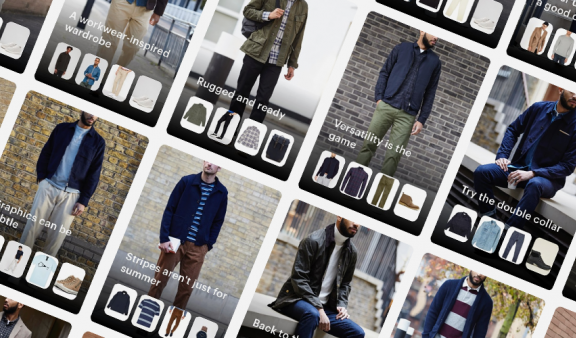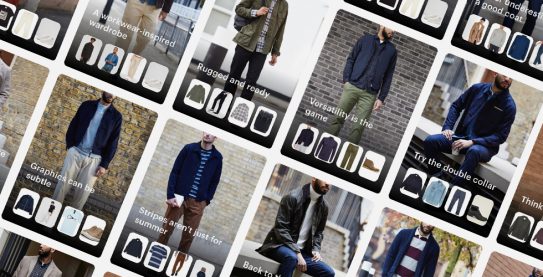
2020 vision: The ecommerce trends to look out for in 2020
Well done you! You’ve got over the post-Christmas comedown, survived the most depressing day (and month!) of the year, beat the detox into submission and smashed Dry January. Now it’s time to look forward to the rest of the year!
After an eventful 2019, it’s business as usual for Redbox with a host of exciting digital commerce projects underway and all the signs pointing to another bumper year for Redbox and the industry as a whole.
Nothing appears to be stopping the rapid growth of ecommerce. A study by data and insights powerhouse Nielsen reported that four billion people are now connected to the internet – some 53 percent of the world’s population. A massive 92.6 percent are using mobile devices to get online and 85 percent of these spend an average of six and a half hours connected a day.
With better connectivity and more hours spent online than ever before, it’s not surprising that Nielsen expects 17.5 percent of all global retail sales to be through digital channels by 2021 – up from 10.2 percent in 2017.
As a global digital commerce and design consultancy and one of the leading Magento partners globally, Redbox is in a prime position to see and hear first-hand what digital brands are getting excited about.
Here are some of the top trends to keep an eye out for in 2020.
Time to get personal
You go onto your favourite online clothes store to look for a new work shirt. Half an hour later, with your head-spinning after scrolling through the first few hundred or so, you leave empty-handed.
It’s a familiar story for many customers and online retailers, but with the growth of personalisation and predictive analytics, brands are finally tapping into many customers’ most precious commodity: time.
Personalisation isn’t about bombarding a customer with email newsletters, or calling them by their first name.
While certainly not a new concept – Ocado and other food and drink shopping brands have been personalising recommendations for years - more brands are now using the amazing wealth of data at their finger-tips to give customers an even better shopping experience.
From previous browser behaviour and purchase history, to time and location of browsing and items abandoned in the cart, brands are able to build-up a detailed picture of each customer and streamline their content and recommendations to suit their shopping habits.
Companies such as online fashion outlet Thread have taken personalisation even further, by making it its core sales strategy. New customers to Thread are asked a series of questions about their likes and dislikes, fashion style, favourite brands, prices they are happy to pay, and so on, with real stylists then regularly selecting items for them to consider. With other recommendations based on algorithms as well, Thread helps customers sift through the clutter and wasted hours that too much choice can often bring.
If your business is not yet reaping the benefits of personalisation, make 2020 the year it does.

Green means go
Last year a 16 (now 17)-year-old girl, Greta Thunberg, was named Time’s Person of the Year and helped propel climate change, environmental issues and sustainability to new levels. Media attention assisted by David Attenborough’s BBC One documentary Climate Change – the Facts, and Sky’s Ocean Rescue series, helped hit the message home.
As concerns for the planet continue to grow, so does the voice of the conscious consumer.
Not-for-profit global movement Fashion Revolution’s recent survey found one in three consumers consider the environmental impact when making a purchase, while research by YouGov for click-and-collect provider Doddle, found 43 percent of UK shoppers are more likely to shop with a rival retailer if they offered a greater range of sustainable delivery options.
Redbox partner Adobe has recently announced that its newest building at its San Jose HQ will be all-electric – run on clean, renewable energy.
Sustainability must become a key part of your online business strategy this year and you can expect to see greater customer loyalty in return.
- Can you take actions to cut down on returns? AR technology can give customers the chance to see clothing on a variety of different-sized people and help reduce the number of clothes sent back in the long-term.
- Are you using sustainable packaging? Can you cut down on package waste in general? Digital cosmetics brand Adore Beauty uses warehouse management software to cut down on its packaging through volumetric calculation. Could you follow suit?
- Could you reduce or off-set your carbon footprint? Can you cut back on flights or needless meetings, or use an online platform to engage with colleagues instead? If not, join some of the biggest brands in the world who are offsetting their carbon footprints by planting trees or supporting wind or solar programmes in other countries.
For more on the rise of ecommerce and sustainability, read our blog
PWAs to continue rapid rise
The buzz surrounding Progressive Web Apps (PWAs) has been building-up pace - and it looks like the technology will truly take off in 2020.
PWAs combine the best parts of native and web apps to deliver much faster and engaging mobile experiences for consumers.
Using existing technology based on languages such as HTML and Javascript, they are built like a website but act like an app, allowing brands to send push notifications and work offline.
Take Starbucks for instance. Its PWA is the perfect antidote for commuters in a rush. On a train with no signal? No problem! If you’ve used its PWA before, the pages are already cached meaning you can scroll through the options offline, order your coffee and then process the payment when you’re back in signal.
PWAs can be up to 10 times faster than a mobile site - with the data cached it’s lightning quick to start the app again and help with conversion rates. They are closing the gap on native apps, as well as being portable across desktop and mobile.
Being able to use them in areas with limited or no internet areas only goes to strengthen their appeal.
Take a look at our blog on PWAs to find out more.

Mobile payment on the rise
Up until recently, consumers were more likely to use their mobile device for browsing digital outlets, before switching to their laptop or desktop to make a payment. But the tide is turning.
Customers want to pay how they want, when they want and with customer experience such a hot topic right now, the best brands are ensuring they offer their customers the right payment options.
According to a recent study, 8.3 million people in the UK - or just less than 20 percent of smartphone users – made at least one mobile payment over a six-month period last year.
The UK has been slow on the uptake compared to some other countries, but 2020 could be a break-out year.
Some app experiences have made the payment process become almost invisible: think Uber. Expect to see more companies following suit as customers become accustomed to keeping their details on file.
Digital retailers must ensure they have a greater variety of payment options than ever before, with a wave of apps and e-wallets giving consumers more control over the way they look after their finances.
Redbox’s partner Klarna gives customers different financing options - the chance to pay later and at their convenience. It means they are no longer slaves to the pay packet or having the hassle of waiting for money to be put back in their account when returning unwanted products they bought online.
The more options, flexibility and ease with which consumers can pay, the more likely they will return.
And finally…
Whether it’s PWAs, payment, or personalisation, it’s clear that mobile has a massive part to play in online digital in the coming years. Better devices, better service and more affordable phone packages have led to many more consumers using them and spending longer on them. Whether we advocate or not, teenagers are also getting their own phones and this is leading to a new generation of mobile savvy consumers when they come of age.
So, are you:
- Taking notice of what percentage of your customers are coming through mobile? If not, it’s time you did your homework. It’s likely to be a large percentage and growing rapidly.
- Mobile-ready? It’s not just about having a responsive website. Several options need to be considered to keep your customers happy and engaged with your brand from varied payment options to PWAs and more.
- Exploring the latest tech and trends that help you personalise customer relationships? Ensuring your customers have the best digital experience possible, which will see them coming back for more.
- Making sustainability a key part of your business strategy? It shouldn’t be an after-thought, the issue itself and the global unease at the slow response to the situation by many is putting the pressure on retailers to do the right thing.
With so much to think about, it can be a daunting prospect knowing where to begin. Ultimately, it is about choosing what is right for your business and customers and putting the necessary strategies in place.
If you would like to discuss any of the above and how they may benefit your ecommerce business, give Redbox a call and let us help you with the next steps.